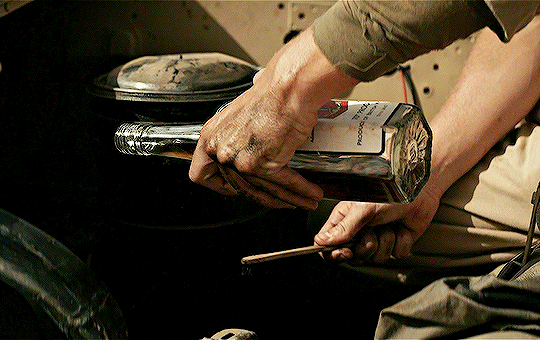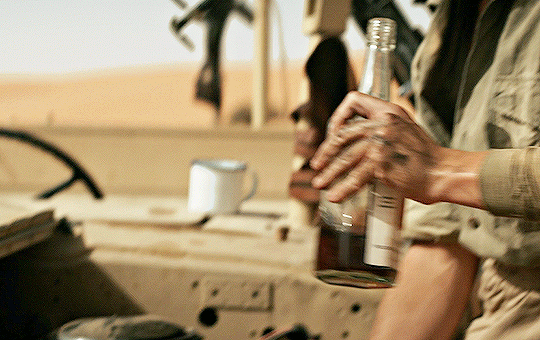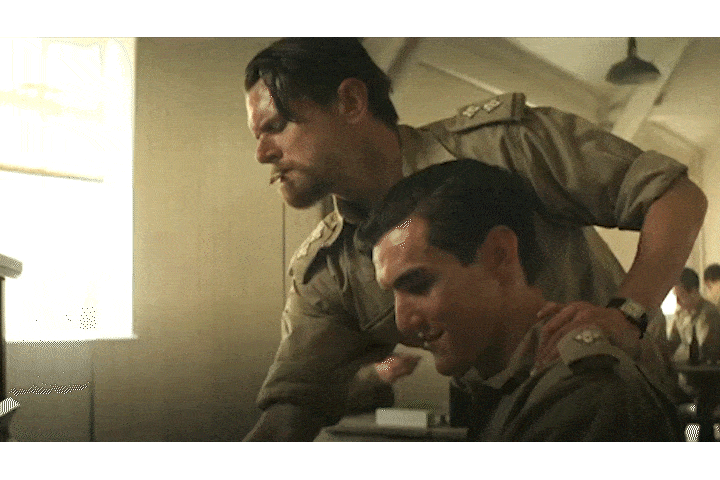#rogue heroes
Explore tagged Tumblr posts
Text
sas rogue heroes is objectively a pretty ok show. the pacing is ridiculous and the emotional beats swing so wildly and there's ac/dc and judas priest as needle drops and half the cast is woefully underused and it's homoerotic and it's mind boggling military propaganda and dominic west plays himself and it's high art, actually, i've decided.
219 notes
·
View notes
Text
Maybe I am Jack O’Connell’s Paddy Mayne cause if my pretty, homosexual, very erotic, plainly obvious yet impossibly hidden muse and love of my life died painfully and needlessly after jumping from a plane and being dragged mercilessly by his parachute through the dessert during a storm on a war mission set by the ever growing rich men in cosy offices protected by the walls of their titles and after camping out in the dessert for months with a group of seriously deranged men (but still not quite as deranged as me) an exact copy of the ghost of the man who haunts me turns up but with glasses and a french accent I too might, half naked and definitely drunk, shove him to the sand and wrestle him into submission with a gun to his head and the heat of my seething voice breathing up his neck
but i’m just a young girl in her 20s so what would I know
#sas: rogue heroes#bbc sas rogue heroes#sas rogue heroes season 2#sas rogue heroes#paddy mayne#jack o’connell#eoin mcgonigal#dónal finn#bbc#rogue heroes
63 notes
·
View notes
Text

Figured my mutuals might like this. 🔥
Screencap and edited by @grlwtskulltattoo
54 notes
·
View notes
Text

#tv shows#tv series#polls#rogue heroes#sas rogue heroes#connor swindells#jack o'connell#jacob ifan#2020s series#british series#have you seen this series poll
60 notes
·
View notes
Text
Paddy knows how to ruin a party😏
#sas rogue heroes#sas rh#season 1#jack o'connell#theo barklem biggs#bobby schofield#the ministry of ungentlemanly warfare#copied this#but Paddy#Entrance#rogue heroes#the cure#world war
18 notes
·
View notes
Text
Just learned that Major Mike Sadler died last week on the 4th at 103 years of age. He was the last surviving founding member of the SAS and the last survivor of the Long Range Desert Group. Rest In Peace, legendary sir.


Many of you may have been introduced to his story through Stephen Knight’s SAS: Rogue Heroes
#sad day losing these legends one by one#hardly any that I made friends with over the years remains#ww2#wwii#world war 2#sas: rogue heroes#rogue heroes#long range desert group#mike sadler#hbo war#tom glynn carney#band of brothers#hbo the pacific#the pacific
109 notes
·
View notes
Text







Paddy Mayne and Eoin McGonigal: Touch
sources:
touch me / Plato / The Song Of Achilles
#sprinkling some greek literature references for the gays#i feel unnormal about them#webbing#web weaving#poetry#poetry webs#rogue heroes#sas rogue heroes#paddy x eoin#paddy mayne#eoin mcgonigal#art webs#touch
166 notes
·
View notes
Text
@mgmplus - The S.A.S will be reporting for duty in 2025. 🫡 #RogueHeroes
15 notes
·
View notes
Text
and i find myself changed by him... he reminds me that underneath i am a poet... kindly what the fuck
85 notes
·
View notes
Text

They are dead men...just awaiting confirmation. Like me.
- SAS: Rogue Heroes (2022) (insp.)
#sas rogue heroes#sas: rogue heroes#sasrh#sasrhedit#sasrhaes#myedit#sas aesthetic#my aesthetic#aesthetic edit#sas#rogue heroes#aesthetic#edit aesthetic#sas rogue heroes aesthetic#starkroqers#ladyeowyn
95 notes
·
View notes
Text
been watching rogue heroes, one ep to go, and wow am i hooked on these boys
#started watching yesterday randomly with my bff’s brother and dad and grandpa#but this show though#rogue heroes#sas rogue heroes#it is just chock full of boys#including some very excellent British boys#alfie allen#connor swindells#jack o’connell#wwii
15 notes
·
View notes
Text
Is It Over Now—MOTA Fic/SAS: Rogue Heroes Crossover teaser
Listen 🤷🏻♀️ sometimes Bernard DeMarco’s new therapist/maybe girlfriend (if they can get over themselves) is actually a former member of the SAS and MAYBE, just MAYBE, she’s an icon and just trying to adjust to the world post-war.
#mota#mota fanfic#masters of the air fanfic#mastersoftheair#masters of the air#oc originalfemalecharacters#benny demarco#benny demarco x oc#bernard demarco#sas rogue heroes#rogue heroes#crossover
21 notes
·
View notes
Text

This is a book for readers of second world war history who like the Boy’s Own version of the conflict. The cast of characters could have stepped straight from a comic strip story. Yet the men of the SAS were real flesh and blood, “rogue heroes” as the title suggests. The organisation now famous for its derring-do, and as famously secretive, has opened its archive to the historian and journalist Ben Macintyre, so that he can produce the first authorised history of what the SAS did in the war.
Macintyre has made the most of the opportunity. The history needs scarcely any embellishment, though he tells it with flair: the simple facts of SAS activity make the “ripping yarns” of comic book heroes pale by comparison. The organisation was the brainchild of two officers posted to the war in Egypt, David Stirling and John “Jock” Lewes. Stirling was an awkward soldier, hostile to spit-and-polish and authority, charming, fun-loving and irreverent (“layer upon layer of fossilised shit” was how he described military bureaucracy). Bored by life in Cairo, he discussed with the ascetic, hard-working, serious-minded Lewes, his complete opposite in personality, the possibility of creating a unit of awkward men like himself, who wanted action, few rules and adventure in small hit-and-run assaults behind enemy lines. Astonishingly, Stirling persuaded the high command in Cairo that he could achieve something significant at low cost in men and materials. The chief of British deception in the desert war, Dudley Clarke, gave the unit its name. Already fooling the Italians with a bogus parachute unit, the First Special Air Service Brigade, he lent the name to Stirling, and the organisation has borne it ever since.
Macintyre uses the SAS war diary as the backbone of his narrative, and is candid about failure as well as the hard-earned successes. The SAS was an irregular unit, its members drawn from an extraordinary range of backgrounds – a spectacles salesman, a textile merchant, a tomato farmer, amateur boxer, and so on – with a range of motives to match. Some wanted excitement, some liked killing and made no pretence about it, some were escaping from their past, some were too eccentric for the ranks; all had to be fit, alert, crafty, ruthless if required and dedicated to the mission. Stirling was also aware that his outfit did not meet with approval in conventional military circles, which saw war as face-to-face, not behind the back. Churchill liked the force, and would no doubt have joined it had it existed in his youth. But through the campaign in North Africa, then Italy and Germany, the SAS had always to prove itself, in order to stave off disbandment.
The new unit nevertheless made a disastrous start and indeed had mixed fortunes throughout the war. The first operation, code-named “Squatter”, carried out while the handful of volunteers were still feeling their way, could not have gone more wrong. Poorly trained as paratroopers, the group nevertheless flew off into a desert storm trying to land at pre-planned dropping zones well to the rear of the enemy. They landed in the worst places, faced a Saharan downpour of biblical proportions, lost some of the troop to injury as they hit the ground, and were then unable to retrieve the parachuted supplies. With explosives so soaked they were worthless, uncertain about their whereabouts, short of food and water, the remnants of the original units made their way back to Egypt. Out of 55 men, 34 were killed, injured, captured or missing without a single achievement.
Macintyre makes the point that this was by no means the end of a madcap idea. Stirling recruited the Long Range Desert Group to take the SAS teams by Jeep or truck rather than risk any further parachute drops, and the second set of raids in December 1941 resulted in the destruction or disabling of 60 enemy aircraft. But Operation Bigamy, a series of raids against Benghazi shortly before the battle of El Alamein, was another disaster. It featured one of the most bizarre figures to emerge from the story: a Belgian textile merchant, Robert Melot. Fluent in Arabic, keen to get at the Germans, he volunteered for the SAS aged 47 as an intelligence officer. He used his range of Libyan contacts to glean information needed for the raids, but in this case Melot miscalculated. An Arab double agent alerted the Germans and Italians and the raids were a disaster. Once again a forlorn, bearded, hungry and damaged band straggled back to Cairo. Melot carried on his SAS career regardless, and died not from his many scrapes in battle, but from a Jeep accident on his way to a party in Brussels late in 1944.
The SAS came of age in the campaign in Italy, where it was used as a more conventional raiding party, the Special Raiding Service, under the command of Paddy Mayne following Stirling’s capture in Tunisia in late 1942. The Italian campaign was a particularly grisly one, and the SRS (with its core of SAS men) found collaboration with the partisans and rivalry with the Special Operations Executive (SOE) a challenge (unlike the SAS, the SOE always linked up with local resistance). Macintyre spares none of the details; the SAS fought a dirty war against an enemy they regarded as every bit as dirty. Prisoners were rare, but in return Hitler condemned irregular commando units to death if they were caught. Not all were killed by any means, but many were, just as the Germans killed all the other irregular, partisan forces ranged against them.
In October 1945 the army wound up the SAS and it continued to exist by subterfuge, a unit of war crimes investigators searching for evidence across Europe that SAS members had been murdered. In 1947, to meet the many crises of empire, the SAS was revived. What it did then and since can be guessed at, but until the postwar unit diaries are revealed, like the wartime diary used by Macintyre, the exact details will not be known.
What in the end did the SAS achieve in the war? Macintyre does not really say, leaving the narrative to speak for itself. It did not, as some of the book’s publicity has suggested, turn the tide of war. Its overall accomplishment, set beside those of the Commandos, or the SOE, the Chindits or other partisan groups, was strategically modest, whatever its tactical successes. But the SAS did bring to life the plucky, maverick, individualist hero of the comic strip, a very British way of making war. SAS: Rogue Heroes is a great read of wartime adventuring, in a long, grim war of attrition where adventure was hard to find.
Daily inspiration. Discover more photos at Just for Books…?
40 notes
·
View notes
Text










Sofia Boutella
112 notes
·
View notes
Text




been into paddy lately. i like him.
#paddy mayne#sas rogue heroes#rogue heroes#artists on tumblr#queer artist#sketch#art#new artist#my art#procreate#idk how to tag lmao
52 notes
·
View notes

















